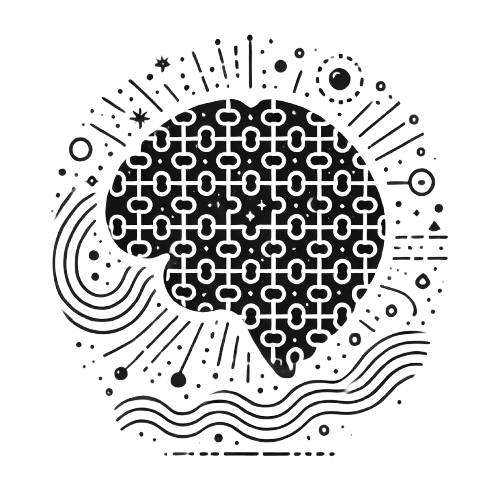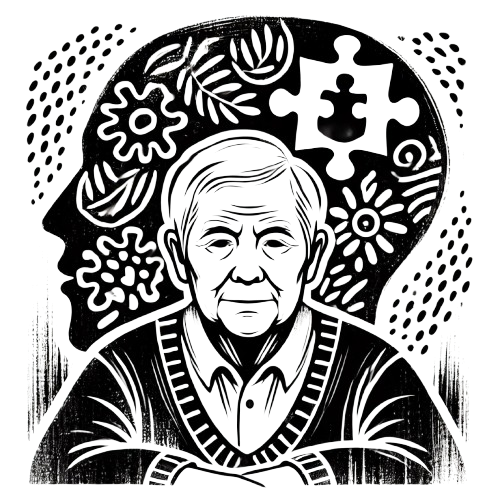10 Autism Myths and Facts
Autism Spectrum Disorder (ASD) affects millions of individuals worldwide, yet misconceptions and myths about autism continue to persist.
These misunderstandings often lead to stigma, confusion, and barriers to acceptance and support.
Let’s delve into some of the most common myths about autism and provide the facts needed to dispel these misconceptions.
Myth 1: Autism Is a Disease
Fact: Autism is not a disease; it is a neurological and developmental condition. Autism affects how individuals perceive and interact with the world, as well as how they communicate and process information.
While there is no “cure” for autism, it is not something that needs to be “fixed.” Instead, the focus should be on understanding, acceptance, and supporting individuals to thrive in their own unique ways.
The misconception that autism is a disease can perpetuate harmful stereotypes and lead to unnecessary medicalization of a neurodevelopmental difference. Autism is a lifelong condition, and with the right accommodations and understanding, individuals can lead fulfilling and productive lives.
Myth 2: Vaccines Cause Autism
Fact: Extensive scientific research has shown that vaccines do not cause autism. This myth originated from a now-debunked study published in 1998, which has since been retracted due to fraudulent data and unethical practices.
Numerous large-scale studies, including those conducted by the Centers for Disease Control and Prevention (CDC) and the World Health Organization (WHO), have confirmed that there is no link between vaccines and autism.The perpetuation of this myth has had dangerous consequences, leading to vaccine hesitancy and outbreaks of preventable diseases. It is essential to rely on evidence-based science and trust in the safety and efficacy of vaccines.
Myth 3: Autistic People Lack Empathy
Fact: The idea that autistic individuals lack empathy is both inaccurate and harmful. While some autistic people may express empathy differently, they are capable of deep emotional understanding and compassion.

Research shows that autistic individuals often experience heightened sensitivity to the emotions of others, though they may struggle to express this sensitivity in conventional ways.Empathy can be influenced by communication differences and sensory challenges, but it is important to recognize that autistic people experience a rich emotional life. Building understanding and fostering effective communication can help bridge these gaps.
Myth 4: Autism Only Affects Children
Fact: Autism is a lifelong condition. While early diagnosis is crucial for intervention and support, many autistic individuals are diagnosed later in life, often due to a lack of awareness or misdiagnosis during childhood.

Adults with autism continue to face unique challenges and require support tailored to their evolving needs.The focus on children in discussions about autism can leave adults feeling invisible. It is vital to recognize and address the needs of autistic individuals across all stages of life, from education and employment to social inclusion and aging.
Myth 5: All Autistic People Have Intellectual Disabilities
Fact: Autism is a spectrum, meaning it encompasses a wide range of abilities and challenges. Some autistic individuals have intellectual disabilities, while others have average or above-average intelligence.
Many autistic individuals excel in specific areas, such as mathematics, art, music, or technology.The assumption that all autistic people face intellectual challenges undermines the diversity of the autism spectrum. By understanding the individual strengths and challenges of each person, we can create a more inclusive and supportive society.
Myth 6: Autistic People Cannot Lead Independent Lives
Fact: Many autistic individuals lead independent and successful lives. Independence looks different for everyone and is influenced by various factors, including support systems, access to resources, and individual goals.
Some autistic people require minimal support, while others may need assistance in specific areas.Promoting independence involves providing the right accommodations, fostering life skills, and creating environments that support success. With the right resources, autistic individuals can achieve their personal and professional aspirations.
Myth 7: Autism Is Caused by Bad Parenting
Fact: Autism is not caused by parenting style or family dynamics. This myth dates back to outdated theories, such as the “refrigerator mother” hypothesis, which falsely claimed that cold or distant parenting led to autism.
Modern research has firmly established that autism is a neurological condition influenced by genetic and environmental factors.Blaming parents for their child’s autism is not only incorrect but also deeply hurtful. Instead, the focus should be on empowering families with the knowledge and tools needed to support their children effectively.
Myth 8: Autistic People Are All the Same
Fact: Autism is a spectrum, meaning no two autistic individuals are the same. The phrase “If you’ve met one person with autism, you’ve met one person with autism” highlights the diversity within the community.
Autistic people have unique strengths, challenges, and preferences, which require individualized approaches to support and inclusion.Generalizing autistic individuals leads to stereotypes and limits understanding. Embracing the spectrum nature of autism allows for greater appreciation of each person’s individuality.

Myth 9: Autism Is a Modern Epidemic
Fact: Autism is not a new condition, and its prevalence has not dramatically increased due to a sudden epidemic. What has changed is our understanding and diagnostic criteria for autism.
Increased awareness, better diagnostic tools, and broader definitions of the spectrum have contributed to higher reported rates of autism.Historical accounts and research suggest that autism has always existed, but many individuals went undiagnosed in the past. Today’s data reflect progress in recognizing and supporting autistic individuals rather than an epidemic.
Myth 10: Autism Is Always a Disability
Fact: While autism can present challenges, it is not inherently a disability for everyone. Many autistic individuals view their condition as a difference rather than a deficit. Autism can bring unique strengths, such as heightened focus, creativity, and exceptional problem-solving abilities.
The challenges associated with autism often arise from societal barriers and a lack of accommodations rather than the condition itself.By creating inclusive environments and valuing neurodiversity, society can better support autistic individuals in harnessing their strengths and overcoming obstacles. Recognizing autism as a difference rather than solely a disability fosters a more positive and empowering perspective.
Conclusion
Dispelling myths about autism is a crucial step toward building a more inclusive and accepting society.
By replacing misconceptions with facts, we can break down barriers, reduce stigma, and create a world where autistic individuals are valued for who they are.
Understanding autism requires empathy, education, and a commitment to celebrating the diversity of the human experience.Let’s continue to challenge myths and champion the voices of autistic individuals and their families, fostering a culture of acceptance and inclusion for all.
Support Autism Canada
Your generosity helps make a difference in the lives of individuals and families affected by autism.
Donate Now
What are 5 common signs of autism?
Autism Spectrum Disorder (ASD) can present differently in each individual, but some common signs include:
- Difficulty with social interactions: Challenges in understanding social cues, maintaining conversations, or forming relationships.
- Repetitive behaviors: Engaging in repetitive actions, such as hand-flapping, rocking, or repeating phrases.
- Intense focus on specific interests: A deep and persistent interest in certain topics or activities.
- Sensory sensitivities: Overreacting or under reacting to sensory input, such as sounds, lights, textures, or smells.
- Delayed communication skills: Challenges in verbal and nonverbal communication, including limited speech or difficulty understanding gestures.
What does high-functioning autism look like in adults?
High-functioning autism, often associated with individuals on the less severe end of the spectrum, may present as:
- Social challenges: Difficulty in understanding social norms, body language, or small talk.
- Intense focus: Exceptional attention to detail or expertise in specific areas of interest.
- Sensory sensitivities: Discomfort or overwhelm in loud, bright, or crowded environments.
- Communication differences: Preference for direct, factual conversations and challenges with abstract or figurative language.
- Need for routine: A strong preference for structure and predictability in daily life.
While these traits can present challenges, many adults with high-functioning autism lead fulfilling lives, leveraging their unique strengths in personal and professional settings.
What is autism?
Autism is a neurodevelopmental condition that affects how individuals perceive, communicate, and interact with the world.
Autism is characterized by challenges in social interactions, communication, and repetitive behaviors, as well as unique strengths and differences.

It is a spectrum condition, meaning it presents in varying degrees of severity and can include individuals with intellectual disabilities or exceptional abilities in specific areas.
Autism is not a disease but a lifelong condition that is an integral part of neurodiversity.
Can someone with autism have a normal life?
Yes, many individuals with autism can lead a “normal” life, though what is considered normal varies from person to person. With appropriate support, accommodations, and understanding, autistic individuals can:
- Pursue education and career opportunities.
- Form meaningful relationships.
- Live independently or with minimal assistance.
Success often depends on recognizing and addressing individual needs while celebrating their unique strengths and perspectives.
Is ADHD a form of autism?
No, ADHD (Attention-Deficit/Hyperactivity Disorder) and autism are distinct conditions, though they share some similarities and can co-occur.
Both are neurodevelopmental disorders, and individuals with ADHD and autism may experience difficulties with focus, impulsivity, or social interactions. However, they differ in their underlying characteristics and diagnostic criteria.
Co-occurrence is common, and approximately 30-50% of individuals with autism also have ADHD.
How serious is autism?
The seriousness of autism varies widely depending on the individual. Autism is a spectrum condition, meaning some individuals may experience significant challenges requiring substantial support, while others may need minimal or no support to thrive.

Challenges can include communication difficulties, sensory sensitivities, or co-occurring conditions (e.g., anxiety or intellectual disabilities). However, autism is not inherently “serious” in the sense of being life-threatening;
with the right accommodations and understanding, autistic individuals can achieve fulfilling lives. The key is to focus on acceptance and individualized support.
Autism Myths and Facts Quiz
Question 1
Which of the following statements about autism is true?
a) Autism is a disease that can be cured.
b) Autism is a neurological and developmental condition.
c) Autism is caused by bad parenting.
d) Autism is a modern epidemic.
Question 2
What is the primary cause of autism, according to scientific research?
a) Vaccines
b) Genetic and environmental factors
c) Parenting style
d) Poor nutrition
Question 3
Which statement about empathy in autistic individuals is correct?
a) Autistic individuals lack empathy entirely.
b) Autistic individuals experience empathy differently and may express it in unconventional ways.
c) Autistic individuals cannot understand the emotions of others.
d) Autistic individuals are emotionally detached.
Question 4
Autism is:
a) A condition that only affects children.
b) A lifelong condition that can affect people of all ages.
c) Always associated with intellectual disabilities.
d) Easily identifiable in every individual.
Question 5
Why has the reported prevalence of autism increased in recent years?
a) Autism has become more common due to environmental changes.
b) Improved awareness, diagnostic tools, and broader definitions of the spectrum.
c) Vaccines have caused more cases of autism.
d) Parenting styles have changed, leading to more autism diagnoses.
Answers
- b) Autism is a neurological and developmental condition.
- b) Genetic and environmental factors.
- b) Autistic individuals experience empathy differently and may express it in unconventional ways.
- b) A lifelong condition that can affect people of all ages.
- b) Improved awareness, diagnostic tools, and broader definitions of the spectrum.